
I’m excited to share some tasty and healthy recipes from the Blue Zones. These special places around the world are home to people who often live to be 100 years old or more. They eat foods that keep them strong and healthy for a very long time.
Blue Zones residents reach age 100 at rates up to 10 times greater than average. I’ve picked out 10 of the best recipes that match how people eat in the Blue Zones. These dishes use simple, natural ingredients that are easy to find. They’re also full of good things your body needs to stay healthy. By trying these recipes, you can eat more like the world’s longest-lived people.
1. Sardinian Minestrone
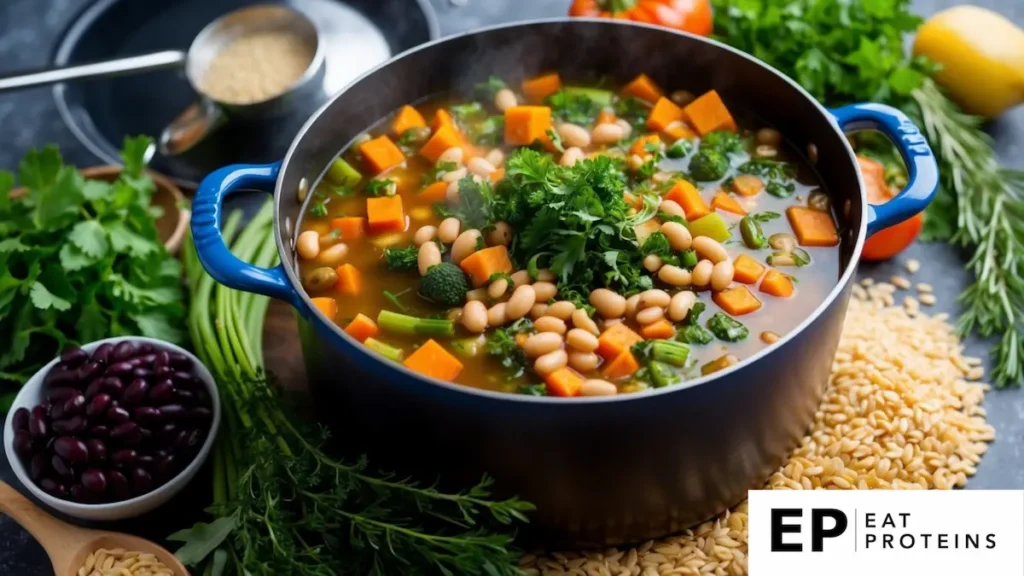
Sardinian minestrone is a hearty vegetable soup from the Blue Zone of Sardinia. It’s a staple in the Sardinian diet, known for promoting longevity.
This soup is easy to make and packed with nutrients. I can whip it up in about an hour with simple ingredients.
To start, I chop onions, carrots, celery, and garlic. I sauté these in olive oil for 5 minutes. Then, I add diced potatoes, beans, and seasonal vegetables like zucchini or squash.
Next, I pour in vegetable broth and bring it to a boil. I let it simmer for 30-40 minutes until the vegetables are tender. Towards the end, I add some small pasta and cook for another 10 minutes.
The traditional Sardinian version might include a small amount of salted pork for flavor. I sometimes add a Parmesan rind for extra depth.
I finish the soup with a drizzle of olive oil and fresh herbs. It’s a comforting, nutritious meal that embodies the healthy eating habits of the Blue Zones.
2. Ikarian Veggie Stew

Ikarian Veggie Stew is a nutritious dish from the Blue Zone of Ikaria, Greece. It’s packed with vegetables and beans, providing lots of fiber and nutrients.
This stew is easy to make. I can prepare it in about an hour with simple ingredients. It’s a one-pot meal that doesn’t require much hands-on time.
To start, I chop 2 onions, 4 garlic cloves, and 3 carrots. I sauté them in olive oil for 5 minutes. Then I add 2 diced potatoes, 1 cup of chickpeas, and 1 cup of white beans.
Next, I pour in 4 cups of vegetable broth and bring it to a boil. I reduce the heat and let it simmer for 30 minutes. After that, I add 2 cups of chopped kale and cook for another 10 minutes.
For seasoning, I use 1 teaspoon each of oregano and thyme, plus salt and pepper to taste. A splash of lemon juice at the end brightens up the flavors.
This stew serves 4-6 people. It’s filling and warming, perfect for a healthy lunch or dinner.
3. Nicoyan Black Bean Soup
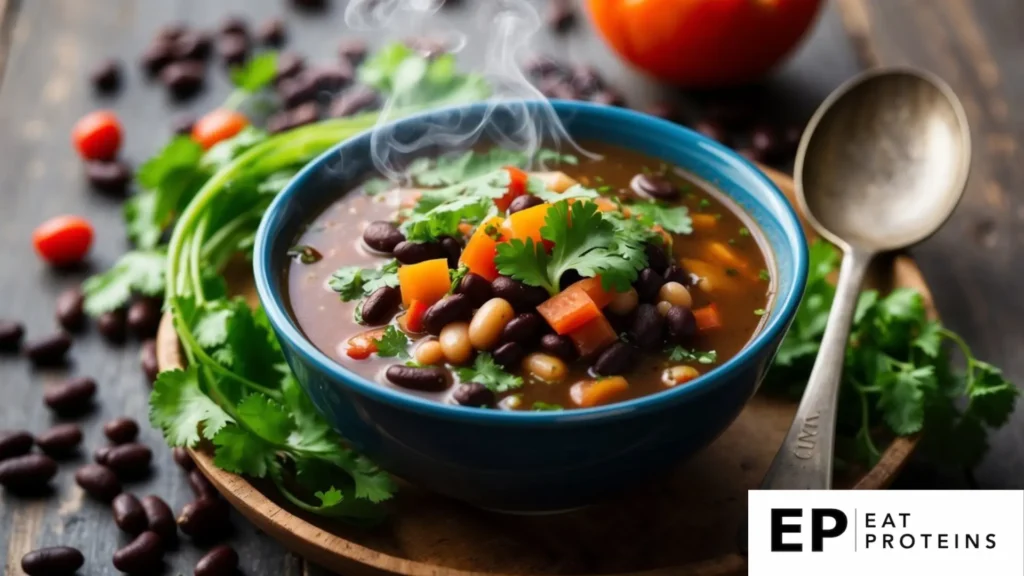
Nicoyan Black Bean Soup is a staple dish from the Nicoya Peninsula in Costa Rica, one of the world’s Blue Zones. This hearty soup is packed with nutrients and flavor.
I find this recipe easy to make, perfect for both beginners and experienced cooks. It requires simple ingredients that are likely already in your pantry.
To start, I soak 2 cups of black beans overnight. Then, I drain and rinse them before cooking. In a large pot, I sauté 1 diced onion and 2 minced garlic cloves in olive oil for 5 minutes.
Next, I add the soaked beans, 6 cups of water, and 1 diced bell pepper. I bring the mixture to a boil, then reduce heat and simmer for about 1.5 hours until beans are tender.
I season the soup with 1 teaspoon of cumin, salt, and pepper to taste. For added flavor, I sometimes include a bay leaf or a splash of lime juice.
This nutritious soup is rich in protein and fiber. It’s a filling meal on its own or can be served with rice for a complete Blue Zone-inspired dish.
4. Loma Linda Lentil Loaf
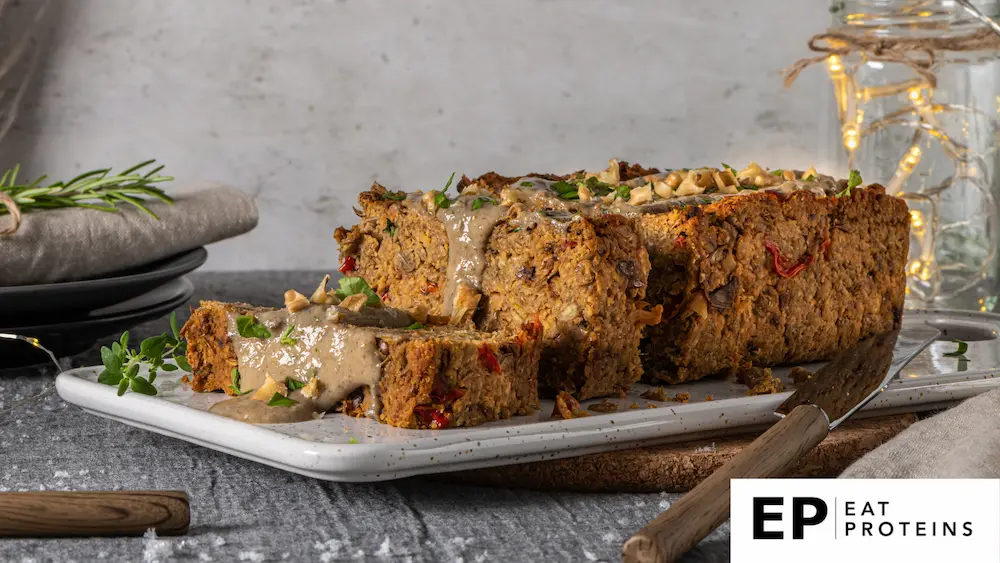
I’ve discovered a tasty and nutritious dish from the Blue Zone of Loma Linda, California: the Lentil Loaf. This plant-based recipe is packed with protein and fiber.
The Lentil Loaf is simple to make. I start by cooking 2 cups of lentils until they’re soft, which takes about 20 minutes. Then I mix them with 1 cup of breadcrumbs, chopped vegetables, and spices.
Next, I form the mixture into a loaf shape and bake it for 40 minutes at 350°F. The result is a hearty, flavorful main dish that’s perfect for dinner.
This recipe fits well with the Blue Zone diet principles. It’s mostly plant-based and uses whole grains. Lentils are a key part of many long-lived communities’ diets.
The Loma Linda Lentil Loaf is versatile too. I can add different vegetables or spices to change up the flavor. It’s a filling meal that keeps me satisfied without relying on meat.
5. Okinawan Sweet Potato Salad
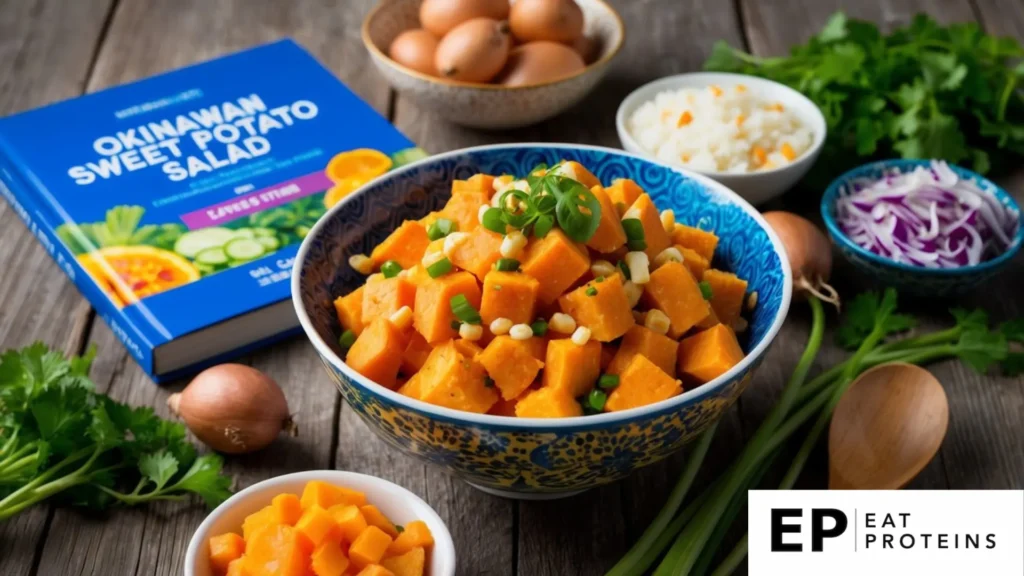
Okinawan sweet potatoes are a staple in the Blue Zone diet of this Japanese island. These purple tubers are packed with nutrients and antioxidants.
I find this salad easy to make and full of flavor. It’s a great way to enjoy the benefits of Okinawan sweet potatoes in a refreshing dish.
To start, I peel and cube 2 pounds of Okinawan sweet potatoes. I boil them for about 15 minutes until tender, then drain and cool.
While the potatoes cool, I mix the dressing. I combine 1/4 cup mayo, 1 tablespoon rice vinegar, and 1 teaspoon soy sauce.
Next, I add the cooled potatoes to a bowl with 1/4 cup diced red onion and 1/4 cup chopped green onions.
I pour the dressing over the potato mixture and gently toss to coat. For extra nutrition, I sometimes add 1/2 cup of edamame or diced cucumber.
I chill the salad for at least 30 minutes before serving. This allows the flavors to meld and creates a more refreshing dish.
6. Costa Rican Gallo Pinto

Gallo Pinto is a popular Costa Rican dish made with rice and beans. It’s a staple in Blue Zone diets due to its nutritious ingredients and simple preparation.
I find this recipe very easy to make. It takes about 30 minutes to cook and uses common pantry items.
To start, I sauté 1/2 cup of diced onions and bell peppers in 1 tablespoon of olive oil for 5 minutes. Then I add 2 cups of cooked black beans and 2 cups of cooked rice.
Next, I stir in 2 tablespoons of Salsa Lizano, a Costa Rican condiment. If I can’t find it, I use Worcestershire sauce as a substitute.
I cook the mixture for 10 minutes, stirring often. This allows the flavors to blend well. For extra nutrition, I sometimes add chopped cilantro or a fried egg on top.
Gallo Pinto is versatile. I enjoy it for breakfast, lunch, or dinner. It’s filling and provides a good balance of protein and complex carbohydrates.
7. Mediterranean Chickpea Salad

Mediterranean Chickpea Salad is a tasty and healthy dish that fits perfectly into the Blue Zone diet. It’s packed with nutrients and easy to make.
I love this salad because it’s simple and quick. It takes about 15 minutes to prepare, making it great for busy days.
The main ingredient is chickpeas, also known as garbanzo beans. They’re full of protein and fiber. I mix them with chopped cucumbers, tomatoes, and red onions for crunch and flavor.
For dressing, I use olive oil and lemon juice. This adds a zingy taste and heart-healthy fats. I also toss in some fresh herbs like parsley or mint.
To make it, I drain and rinse a 15-ounce can of chickpeas. Then I chop 1 cucumber, 1 cup of cherry tomatoes, and 1/4 red onion. I mix these in a bowl with the chickpeas.
For the dressing, I whisk 3 tablespoons of olive oil with 2 tablespoons of lemon juice. I add salt and pepper to taste. Then I pour it over the salad and mix well.
This Mediterranean-style salad is filling and nutritious. It’s a great lunch option or side dish for dinner.
8. Greek Fasolada
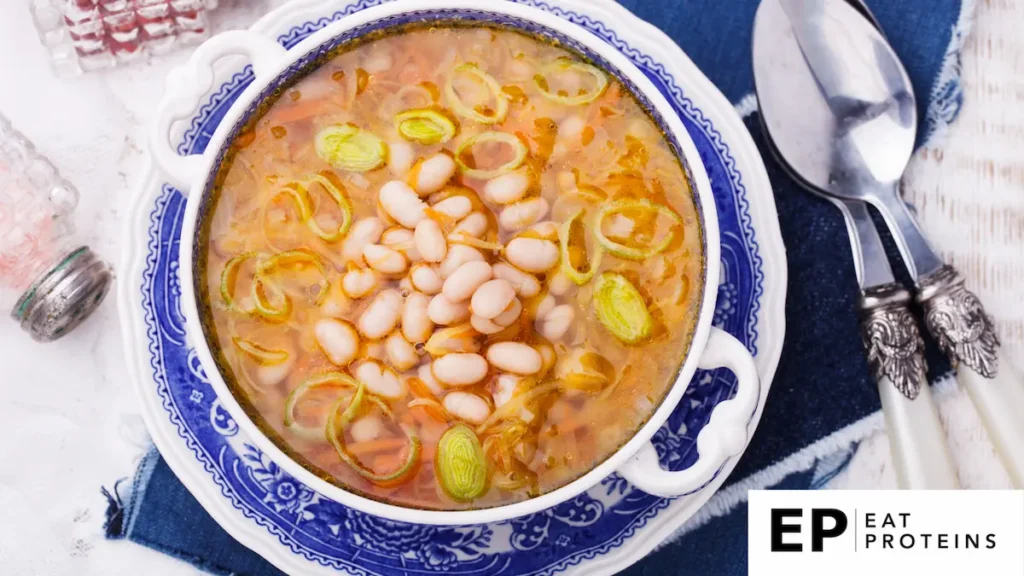
Greek Fasolada is a hearty bean soup that’s a staple in Blue Zone diets. It’s made with white beans, vegetables, and olive oil.
I find Fasolada easy to make. It requires simple ingredients and basic cooking skills. The recipe typically serves 6-8 people.
To make Fasolada, I start by soaking 2 cups of white beans overnight. Then, I drain and rinse them.
Next, I sauté chopped onions, carrots, and celery in olive oil for about 5 minutes. I add the beans, 6 cups of water, and seasonings.
I let the soup simmer for about 1.5 hours until the beans are tender. During the last 15 minutes, I add chopped tomatoes.
Fasolada is nutritious and filling. It’s high in fiber and protein from the beans. The olive oil provides healthy fats.
I like to serve Fasolada with crusty bread and a drizzle of extra virgin olive oil on top. It’s a comforting meal, especially on cold days.
9. Blue Zone Garden Stir-Fry

Blue Zone Garden Stir-Fry is a quick, healthy dish packed with fresh veggies. It’s inspired by the plant-based diets common in Blue Zones, areas where people live longer.
I find this recipe super easy to make. It takes about 20 minutes from start to finish. Perfect for busy weeknights when I want something nutritious and tasty.
Here’s how I make it:
- I chop up 2 cups of mixed vegetables like bell peppers, broccoli, and carrots.
- Next, I heat 1 tablespoon of olive oil in a large pan over medium heat.
- I add the veggies and stir-fry for 5-7 minutes until they’re crisp-tender.
- Then I toss in 1/2 cup of cooked beans for protein and 1 clove of minced garlic for flavor.
- I cook everything for another 2-3 minutes.
- Lastly, I season with a pinch of salt and pepper to taste.
This stir-fry is versatile. I can use any vegetables I have on hand. Sometimes I add a handful of nuts or seeds for extra crunch and nutrients.
10. Cretan Dakos Salad
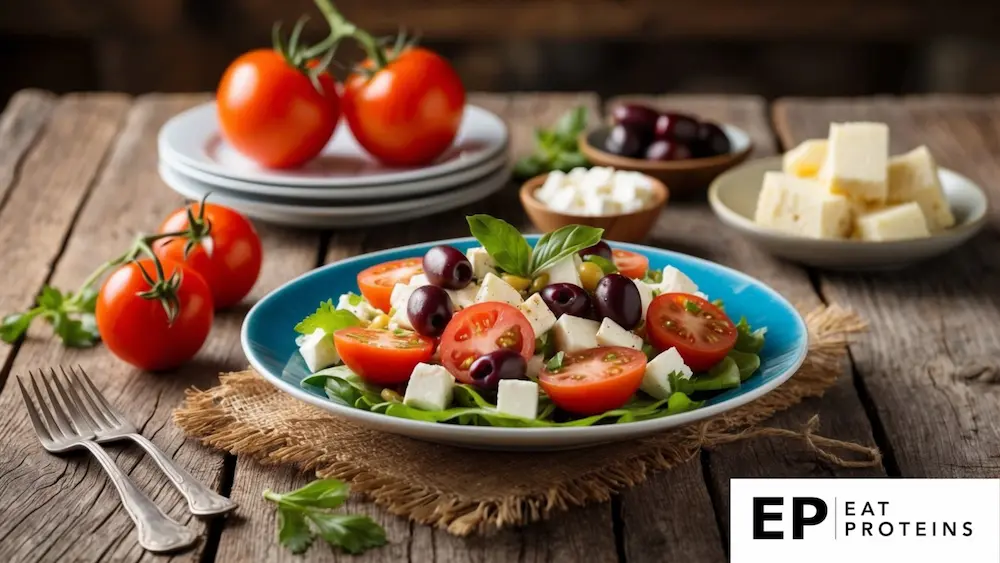
Cretan Dakos Salad is a traditional dish from the island of Crete. It’s a simple yet flavorful meal that fits well into the Blue Zone diet.
I find this salad easy to make. It takes about 15 minutes to prepare and requires no cooking.
To make Dakos Salad, I start with a base of barley rusks. These are hard, dried bread slices typical in Cretan cuisine. I top the rusks with chopped ripe tomatoes and crumbled feta cheese.
Next, I add some chopped onions and a sprinkle of dried oregano. A drizzle of extra virgin olive oil finishes the dish.
The combination of ingredients in Dakos Salad provides a good mix of nutrients. The barley rusks offer whole grains, while the tomatoes and olive oil contribute healthy fats and antioxidants.
This salad is not only tasty but also aligns with Mediterranean diet principles. It’s a great example of how Blue Zone eating can be both delicious and nutritious.
What Are the Benefits of the Blue Zone Diet?

The Blue Zone diet offers many health advantages. It can help people live longer and feel better.
What Is the Connection Between the Blue Zone Diet and Improved Longevity?
People who follow Blue Zone eating habits tend to live longer. The diet emphasizes plant-based foods like beans, nuts, and vegetables. These foods have nutrients that fight aging.
I’ve found that Blue Zone diets are low in processed foods and sugar. This helps prevent chronic diseases that can shorten life. The diet also includes moderate amounts of fish and very little red meat.
Blue Zone meals often feature olive oil, which has healthy fats. These fats protect the heart and brain as we age. Drinking red wine in moderation, as some Blue Zone people do, may also have longevity benefits.
How Does the Blue Zone Diet Enhance Physical Health?
The Blue Zone way of eating boosts overall health. It’s rich in fiber from whole grains, fruits, and vegetables. This improves digestion and helps maintain a healthy weight.
I’ve noticed the diet is naturally low in unhealthy fats and high in antioxidants. This combination reduces inflammation in the body. Less inflammation means lower risk of many diseases.
Blue Zone eating habits support heart health. The diet is low in salt and high in potassium from foods like sweet potatoes. This balance helps control blood pressure. The plant-focused meals also lower cholesterol and reduce the risk of heart disease.
What Are the Core Principles of the Blue Zone Diet?
The Blue Zone diet emphasizes plant-based eating and whole foods. These approaches have been linked to longer, healthier lives in certain regions around the world.
How Does the Blue Zone Diet Emphasize a Plant-Based Focus?
I’ve found that Blue Zone diets center around plants. Vegetables, fruits, whole grains, and legumes make up most meals. Animal products are eaten sparingly, usually just a few times per month.
Beans are a staple. Lentils, chickpeas, and other legumes provide protein and fiber. Nuts and seeds offer healthy fats and nutrients.
Leafy greens like spinach and kale are eaten daily. Colorful vegetables add variety and antioxidants to the diet.
Fruit serves as a sweet treat. Berries, citrus, and other whole fruits provide natural sugars and vitamins.
What Is the Role of Whole Foods Over Processed Foods in the Blue Zone Diet?
I’ve noticed Blue Zone diets avoid packaged and processed items. Instead, they use fresh, whole ingredients.
Whole grains like brown rice, quinoa, and oats are common. These provide more nutrients and fiber than refined grains.
Herbs and spices add flavor without excess salt or sugar. Garlic, turmeric, and oregano are popular choices.
Cooking methods are simple. Grilling, roasting, and light sautéing preserve nutrients in foods.
Portion sizes tend to be moderate. People eat until they feel about 80% full, not stuffed.
How Can You Implement the Blue Zone Diet in Daily Life?
Making the Blue Zone diet a part of everyday life takes some planning and preparation. I’ve found that focusing on meal planning and smart grocery shopping are key to success.
What Are Some Meal Planning Tips for the Blue Zone Diet?
I start by planning meals for the week ahead. I aim to include plenty of plant-based proteins like beans and lentils. I try to make vegetables the star of most meals.
On Sundays, I prep ingredients like chopped veggies and cooked grains. This saves time on busy weeknights. I keep a few go-to Blue Zone recipes on hand for quick and easy meals.
I’ve learned to think of meat as a side dish or garnish rather than the main event. I limit it to small portions a few times a week at most.
How Should You Shop for Blue Zone Diet Ingredients?
When grocery shopping, I focus on the produce section first. I fill my cart with colorful fruits and vegetables. Leafy greens are always on my list.
I stock up on whole grains, beans, and nuts which are Blue Zone staples. I choose olive oil as my main cooking oil.
I avoid processed foods and sugary drinks. Instead, I opt for healthy snacks like fresh fruit or a handful of nuts.
I’ve found that shopping at local farmers markets is a great way to get fresh, seasonal produce. It also helps me connect with my community, another Blue Zone principle.
